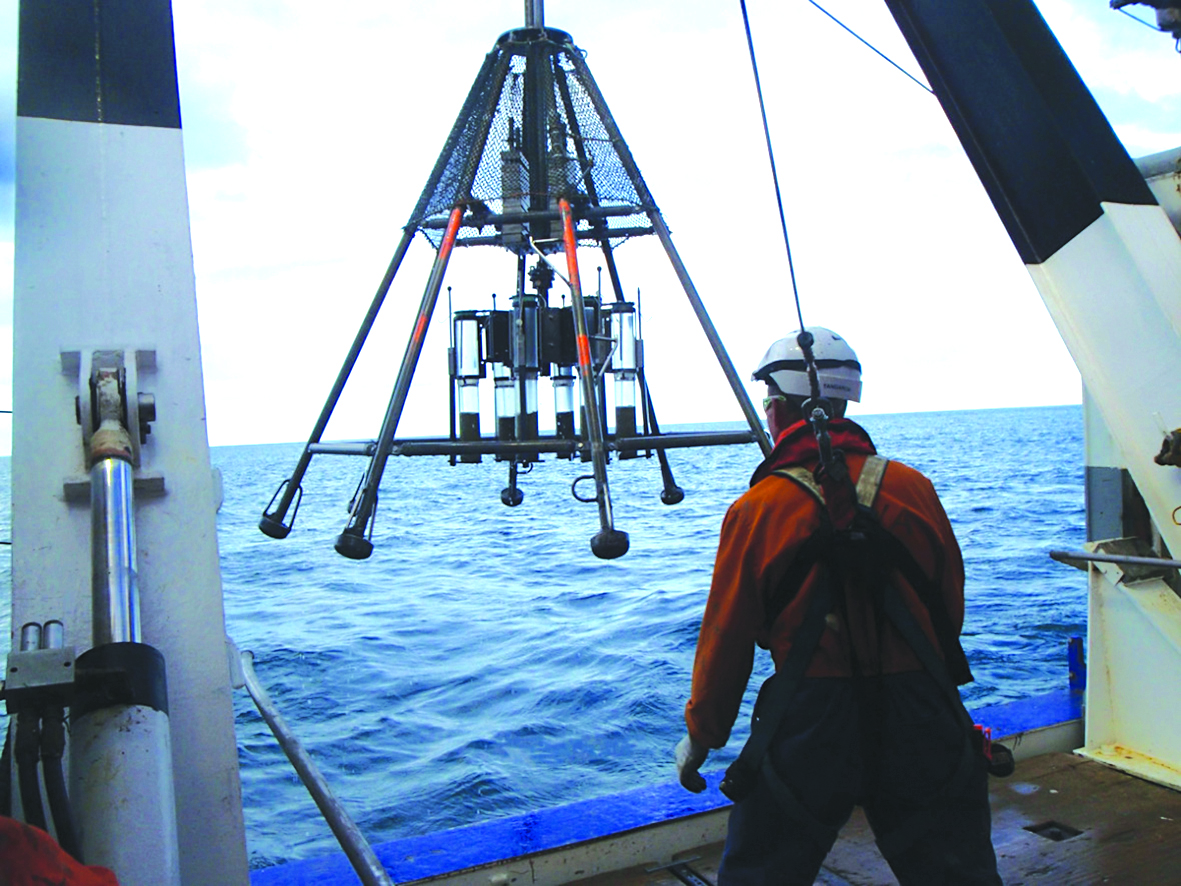Kaikoura's deep seabed rapidly recovering from 2016 earthquake, says NIWA

A multi-coring device used to take seabed samples in Kaikoura Canyon is brought back aboard NIWA research vessel Tangaroa.
The deep seabed along the Kaikoura coast is showing ‘astonishing resilience’ to the physical and biogeochemical disturbance caused by the 2016 earthquake.
NIWA and Victoria University of Wellington PhD student Katie Bigham says the earthquake caused a highly complex ‘full canyon flushing event’ that reshaped the canyon floor and shoved transported850 metric megatons of sediment out along the Hikurangi Channel.
“Inevitably, this was devastating for the abundant marine life in the area, which is New Zealand’s only deep-sea marine reserve," says Katie.
“However, it also provided a rare opportunity to study the impacts of an underwater earthquake on seabed communities. And, encouragingly, the ecosystem is showing great resilience – many of the marine organisms have returned, with some parts well on the way to being fully recovered.,” says Katie.
There was already lots of information on Kaikōura’s deep-sea environment due to earlier surveys in the canyon, including thousands of images and data points. NIWA was therefore able to compare that information to images collected several weeks, months and years after the earthquake.
Those seabed images taken shortly after the earthquake showed that the “canyon flushing event” had been catastrophic for the once- productive benthic community on the seafloor. However, within months, there was a notable increase in some species, including fish and sea cucumbers.
Within four years, the community appeared similar to the pre-disturbance community. NIWA predicts that the whole area will be fully recovered up to 12 years after the earthquake - possibly, sooner.
NIWA Principal Scientist of Marine Ecology and Professor of Marine Biology at Victoria University of Wellington, Dr Ashley Rowden, believes that it’s the very nature of the volatile environment that makes it such a resilient ecosystem.
“We think this habitat can so easily recover because it’s an area often at the mercy of Mother Nature,” says Dr Rowden.
“.The earthquake was a 1-in-140-year event, which may seem infrequent, but in evolutionary terms it’s the blink of an eye. This means the marine life there has regularly experienced massive stressors such as earthquakes, and, in turn,species have adapted to be resilient to them.
“This is like when our bodies are exposed to pathogens and vaccines, which makes our immune system more resilient to disease so we can bounce back quicker,” saysidDr Rowden.
While the results of this study are encouraging for the long-term efficacy of the Hikurangi Marine Reserve, questions remain.
Katie says: “There aren’t just implications around natural pressures on deep-seabed ecosystems, but how humans interact with them. We still don’t know how surrounding deep-sea fisheries were, in turn,impacted by the earthquake, which is a big gap because these are some of New Zealand’s most productive fisheries. “
She says scientists also want to understand how deep-sea mining will affect such ecosystems, but the findings from this study aren’t easily comparable, so more research is needed.”
